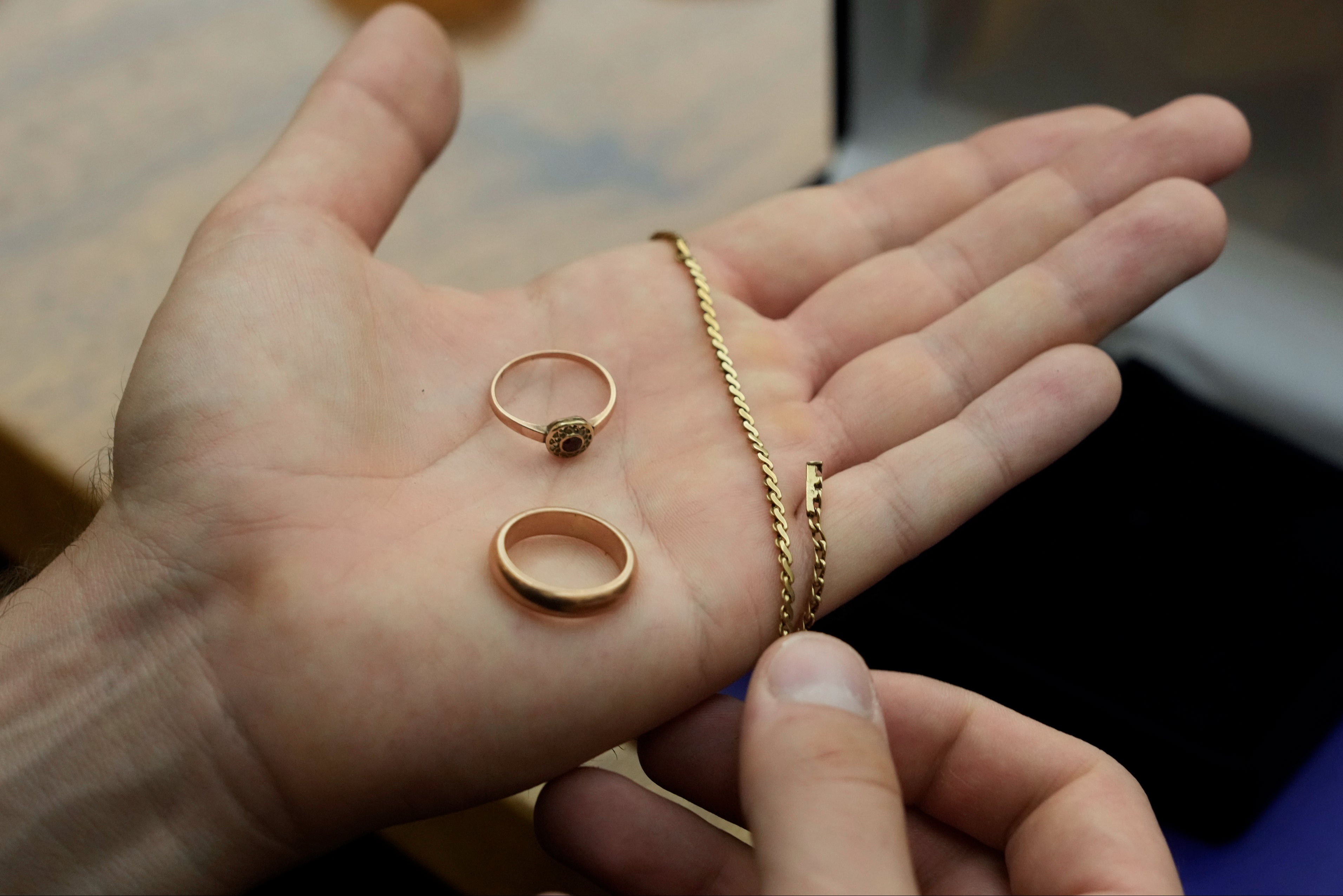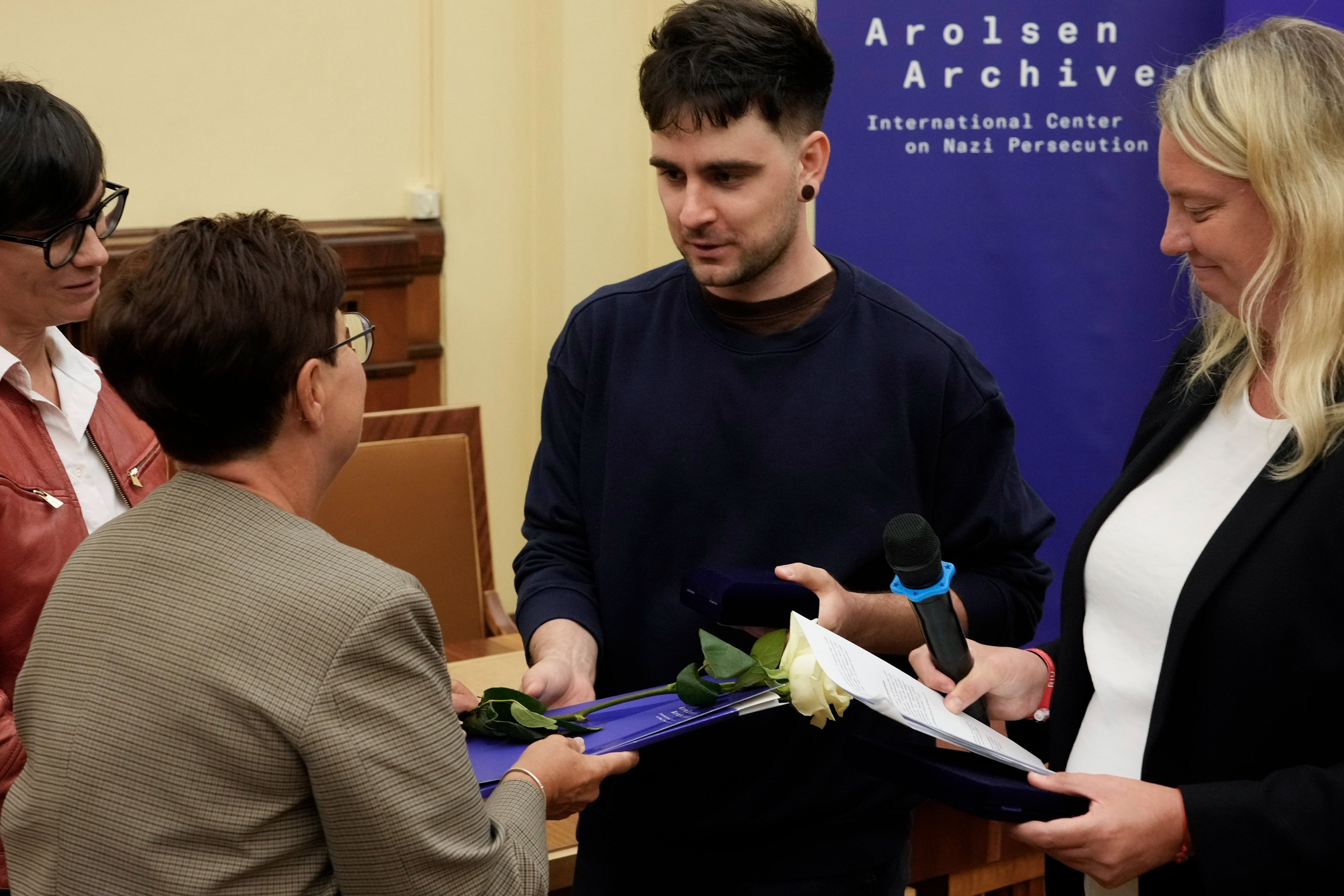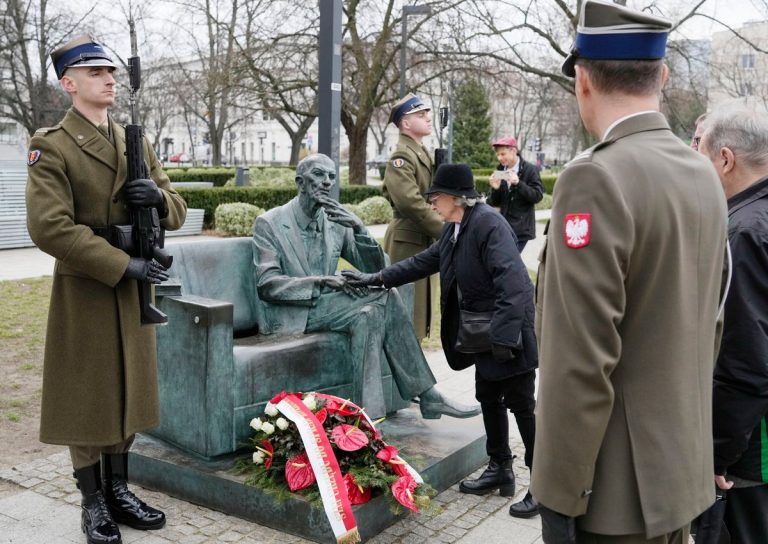Jewellery stolen by the Nazis from concentration camp victims returned to families

Your support helps us to tell the story
Find out moreClose
As your White House correspondent, I ask the tough questions and seek the answers that matter.
Your support enables me to be in the room, pressing for transparency and accountability. Without your contributions, we wouldn’t have the resources to challenge those in power.
Your donation makes it possible for us to keep doing this important work, keeping you informed every step of the way to the November election
Andrew Feinberg
White House Correspondent
Stanislawa Wasilewska was 42 when she was captured by Nazi German troops on 31 August,1944 in Warsaw and sent to the women’s concentration camp at Ravensbrück. From there, she was sent to the Neuengamme forced labor camp, where she was given prisoner number 7257 and had her valuables seized.
Eighty years later, Germany’s Arolsen Archives returned Ms Wasilewska’s jewellery to her grandson and great-granddaughter at an emotional ceremony in Warsaw during which families of 12 Polish inmates of Nazi concentration camps were given back their confiscated belongings.
Some relatives had tears in their eyes as they received the mementoes of their long-gone, often unknown family members. More such ceremonies are planned.
Ms Wasilewska’s family were given back her two amber crucifixes, part of a golden bracelet and a gold wristwatch engraved with the initials KW and the date 7-3-1938, probably marking her wedding to Konstanty Wasilewski.
„This is an important moment in our lives, because this is a story that we did not fully know about and it came to light,” Wasilewska’s great-granddaughter, Malgorzata Korys, 35, told The Associated Press.
When Nazi Germany was defeated in 1945, Ms Wasilewska was taken by the Red Cross from Neuengamme to Sweden, but later returned to Poland. She is buried in her native Grodzisk Mazowiecki, near Warsaw.
From another family, Adam Wierzbicki, 29, was given two rings which belonged to Zofia Strusinska and a golden chain and tooth filling of Jozefa Skorka, two married sisters of his great-grandfather Stanislaw Wierzbicki. Captured together on 4 August like Ms Wasilewska ,the sisters also went through Ravensbr�ck and Neuengamme before the Red Cross took them to Sweden.
 A relative shows items that were confiscated by Nazis from Zofia Strusinska and her sister Jozefa Skorka (AP)
A relative shows items that were confiscated by Nazis from Zofia Strusinska and her sister Jozefa Skorka (AP)
A family story has it that a Swedish man fell in love with one of the sisters and wanted them both to stay, promising to take care of them, but they decided to go back to Poland, Mr Wierzbicki said.
The return of their jewellery is „important for sentimental reasons but also for historical reasons,” Ms Wierzbicki said.
The items were returned by the Arolsen Archives, the international center on Nazi persecution, which holds information on about 17.5 million people. It stores some 2,000 items which were seized by the Nazis from concentration camp inmates from more than 30 countries, and are intended to be returned to their relatives.
When the prisoners were sent to concentration camps, their valuables – wedding rings, watches, gold chains, earrings and other items – were confiscated and put in envelopes marked with their owners’ names. That allowed for the items’ return to the families, decades later.
It was an uplifting moment when the archives volunteers contacted him, Mr Wierzbicki said, but there was also this thought that „history will catch up with you. It was like my aunts were looking at me from the past.”
 The ceremony in Warsaw (AP)
The ceremony in Warsaw (AP)
The archives launched its restitution campaign, „Warsaw Uprising: 100 Untold Stories,” to mark 80 years since the city rose up against the Nazi invaders on1 August, 1944, with the goal of reaching the families of 100 victims and reviving the memory of them through their belongings.
Archive director Floriane Azoulay said they were only custodians of the belongings, which should be returned to the families.
„Every object that we return is personal,” Ms Azoulay said. „And it’s the last personal thing a person had on them before they became a prisoner, before they became a number. So it is a very important object for a family.”
Volunteer Manuela Golc has found more than 100 Polish families and each time it’s an emotional moment.
„It is often the case that we pass on information that the family was not aware of at all,” Ms Golc said. „So this conversation on the phone… is also very difficult. But in the end we are very happy that the memento is returning to the family.”
If she was unable to trace a family online or through official records, she travelled to cemeteries, leaving notes waterproofed against the rain for the families on the graves of people whose data matched those in the archives, asking them to get in touch. Sometimes they do.
The Warsaw Uprising was launched by the underground resistance Home Army with the goal of taking control of the capital city ahead of the advancing Soviet troops. It fell after 63 days of heroic struggle that cost the lives of some 200,000 fighters and civilians. In revenge, the Germans expelled the surviving residents and reduced Warsaw to ruins.
During German occupation from 1939 to 1945, Poland lost some 6 million residents, half of them Jewish, and suffered huge material losses.
Associated Press




